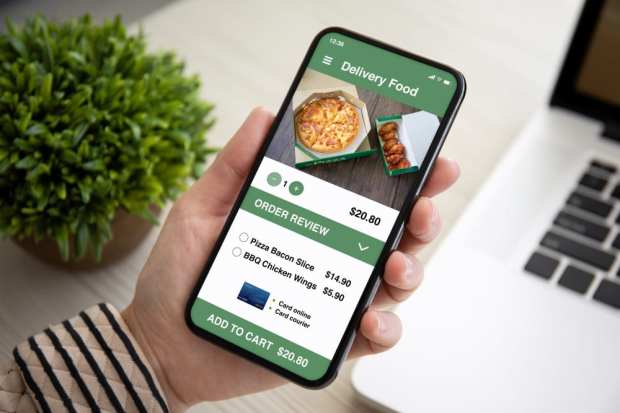Deep Dive: How Offering Greater Digital Payment Choice Can Help QSRs Meet Consumers In Any Channel

Many of the numerous ordering and payment methods that today’s QSR customers enjoy have taken time to evolve and catch on. Calling local pizzerias or Chinese food restaurants to place takeout orders was once seen as a revolutionary development in the space, for example, and drive-thru service followed as the next big step.
Various digital methods have since joined these options as consumers have embraced smartphones and other electronic devices, but the COVID-19 pandemic has been accelerating digital uptake in an unprecedented way. Research confirms that QSR patrons are seeking multiple online and offline ordering methods. A recent survey revealed that more than one-third of customers now prefer to order through restaurants’ websites or apps for delivery, for example, while 42 percent use those platforms for curbside pickup.
These innovations have revolutionized diners’ experiences and transformed the purchasing process. The following Deep Dive explores the ways in which QSR customers’ ordering and payment habits are shifting, as well as how restaurants are changing their operations to meet consumers’ new payment demands.
The Evolution Of Ordering
Restaurants need multiple strategies to meet customers’ demands for speed and convenience, regardless of whether they are ordering in person, by phone, online, via app or at kiosks in brick-and-mortar locations. Such an approach is essential to attracting new customers and enhancing profitability under any circumstances.
The COVID-19 pandemic is contributing heavily to the space’s evolution, prompting eateries to conduct off-premises sales via numerous methods. One study showed that 71 percent of restaurateurs say such transactions represent a higher portion of their business than before the crisis, for example. Another recent poll found that 49 percent of customers prefer to order online but want pickup-only lanes, while 46 percent wish there were more signs detailing menu options.
Other QSRs have invested in novel tools to enhance the ordering process and make it more seamless for customers. McDonald’s purchased California-based voice recognition startup Apprente last year, with plans to eventually implement the technology at its U.S. drive-thrus. The technology supports multilingual, multi-accent functionality that is intended to simplify the ordering process at the drive-thru, and can also be integrated into kiosks and mobile ordering options.
How Payments Factor Into The Ordering Equation
Much of the U.S. was locked down last spring as COVID-19 spread across the nation, and countless restaurants were forced to shutter their brick-and-mortar locations and even their entire operations. Payments thus began to play a more crucial role as restaurant customers sought quick, safe and seamless ways to pay their bills, with digital methods — especially contactless ones — growing more popular.
Consumers are now spoiled for choice in terms of access to digital wallet options like Alipay, Apple Pay, Google Pay and WeChat Pay. A sizable share of restaurants that have reopened have also adopted pay-at-the-table capabilities. Technology is pushing other payments advances in the space, with some restaurants turning to contactless tools that require them to add scan-to-pay or text-to-pay features to their platforms.
Such solutions can put the onus on restaurants to ditch their legacy POS systems, but turning to affordable, cloud-based platforms could make them nimbler as additional payment technologies develop. Restaurants that already offer online ordering can also further integrate payment functionalities and efficiencies, enabling customers to avoid using cash and plastic cards.
The collision of digital tools and customers’ changing behaviors during the pandemic is shifting the sector to off-premises sales, but navigating this new reality has not always been smooth for restaurants. Some have fought with third-party delivery companies over high fees, for example, which have led lawmakers in some cities to limit those costs. The Denver City Council — following similar moves in Chicago, New York City, Seattle and Washington, D.C. — recently capped commission fees for third-party food delivery companies like Grubhub and Uber Eats at 15 percent to prevent too much harm to restaurants’ bottom lines.
Such issues will continue to shift as more consumers tap into digital ordering and payment technologies, and as restaurants incorporate these options into their operations. Evidence suggests that consumers will leverage these newfound payment tools even after the pandemic recedes, so restaurants must be ready to confront any hurdles to win new customers, retain existing ones and boost their revenues.

